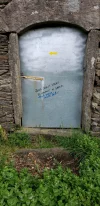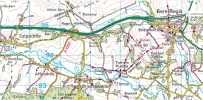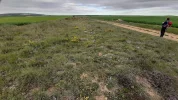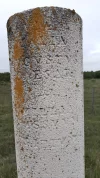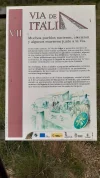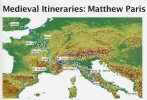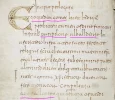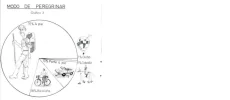@Bradypus Thanks! This brings me back to a question I have raised before. And again I hope Tom
@t2andreo may help. My question is this. Is the route from Lugo through Friol to Sobrado dos Monxes, linking the Primitivo to the Norte, "official"? And is it "recognised by the SAMI"?
I walked this route in May 2016. In the Tourist Office in Lugo, where I went to look for advice, I was told rudely - quite rudely actually - and definitively, the it was "not permitted" to do this, ie to deviate from one route on to another. I paid no heed to this gentleman and took myself off on the "Camino Verde" for the next two days, possibly my two favourite Camino days ever. And I did obtain a Compostela on that occasion.
But my question remains, if there is a requirement that one walks on a route that is recognised by the SAMI is there a list of such routes?
I find it extraordinary that one has to walk on a
particular path. I am horrified by the notion that the pilgrim office might demand evidence of the actual path I have followed, while I can accept that there is a rule about 100km and about two sellos.
The Greenway detour IS ACCEPTED as a valid alternative to adding to the congestion on the lower / final reaches of the
Camino Frances. If you follow the traditional Primitivo, you join the Frances at Melide. This detour cuts up to three days from that. But you cover the same territory, albeit in parallel. Also, it does not skirt the 100 km rule.
The greenway bypass is not an actual Camino route of its own, but merely an accepted alternative routing. In this context, it is similar in concept to the Spiritual Variant of the Camino Portuguese (sort of), or the Camino Sanabres, that links the end of the Via de la Plata to Santiago. There are many other short links or pathways that join one established Camino Route to another established route.
As long as your credencial documents a continuous line of march along an uninterrupted path from a valid starting point to the Cathedral / Santiago, you should be okay.
This is one reason for a minimum of two sellos daily especially in the final 100 km. The more creative pilgrims get to avoid crowding on the Frances, the more data points you need to get your actual route approved.
I suspect the hesitancy to accept some "higgly piggly" routings comes from the fact that outlying villages and towns, not normally frequented by pilgrims, might not be in the computer database for standard distances. In these cases, staff must fire up Google Maps to discern, place by place, whether you indeed followed a more or less accepted route. This means more work and more time needed to determine if your Camino was a valid one. The simpler your routing is, the easier it is for the staff to 'bless' your routing as acceptable and recognized.
My advice if challenged, especially if you are being interviewed by a volunteer, is to ask for a senior staff member to speak to. They will have been there and seen that before, likely many times.
The other analog, that has become an entirely established and accepted route (since 2016) is the Camino de Invierno. This route parallels the
Camino Frances from Ponferrada all the way into Santiago. But it actually makes use of the Sanabres for the final stretch into Santiago. Though some 40 km longer than continuing on the Frances from Ponferrada, it is nonetheless valid. It is also absolutely beautiful. Most importantly, it is virtually undiscovered by the hoards...
Using the basically parallel Greenway route from Lugo over to the end of the Norte at Sobrado dos Monxes, you rejoin the Frances either at Arzua or Lavacolla (my choice). If you do this, you cut from two to three days off the time you would otherwise be contributing to the overcrowding on the final stretch of the Frances.
Hope this helps.












